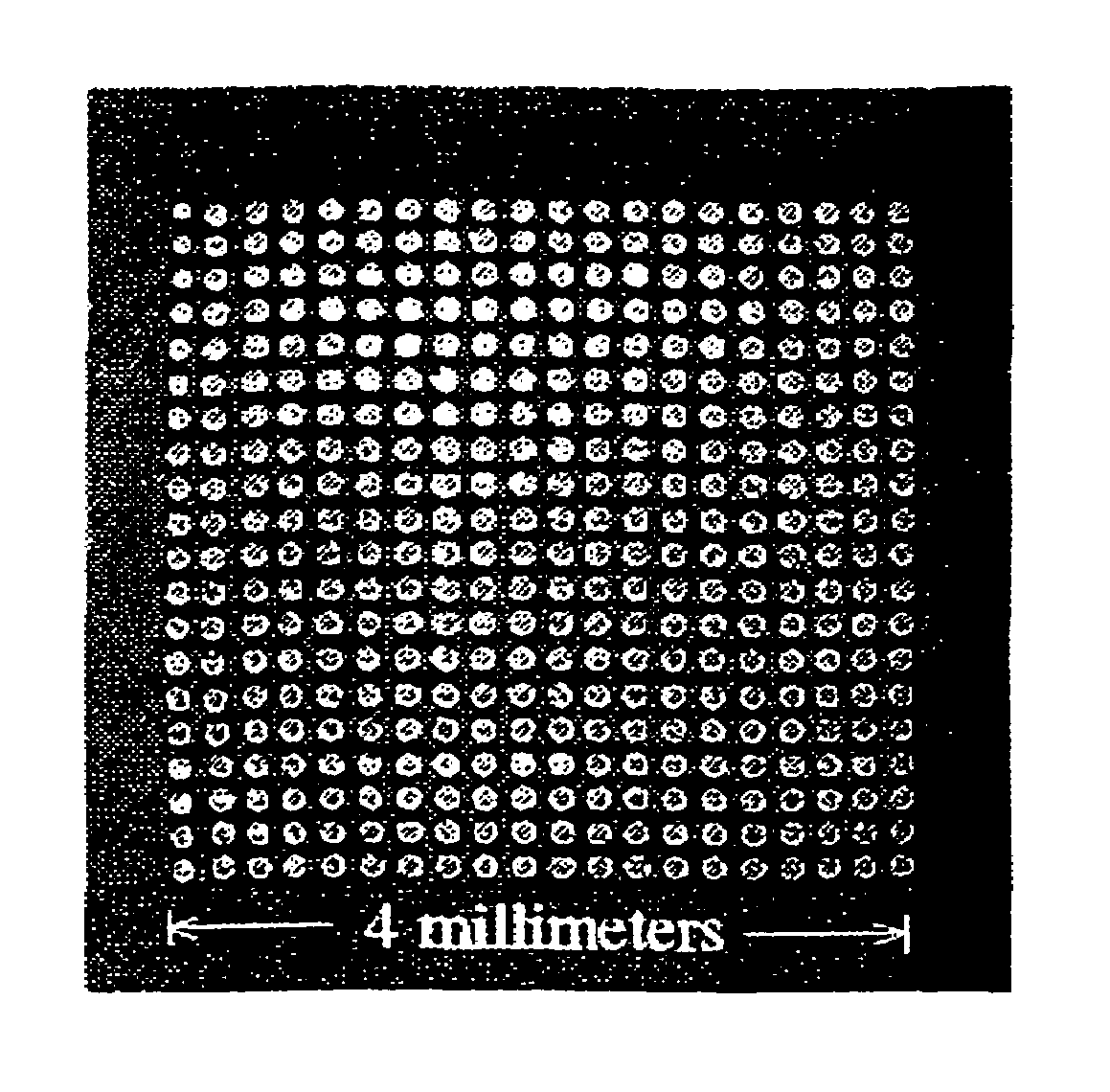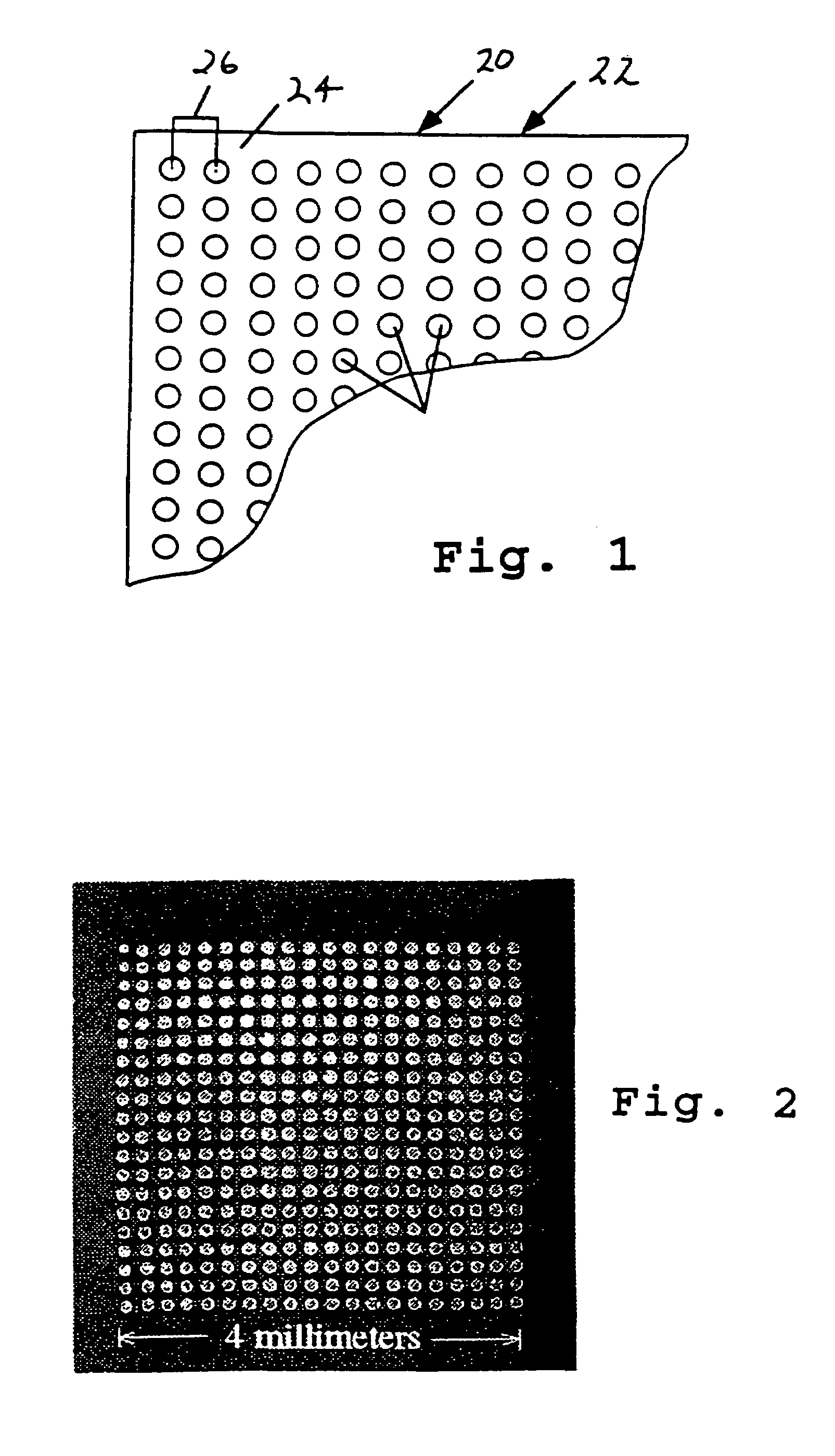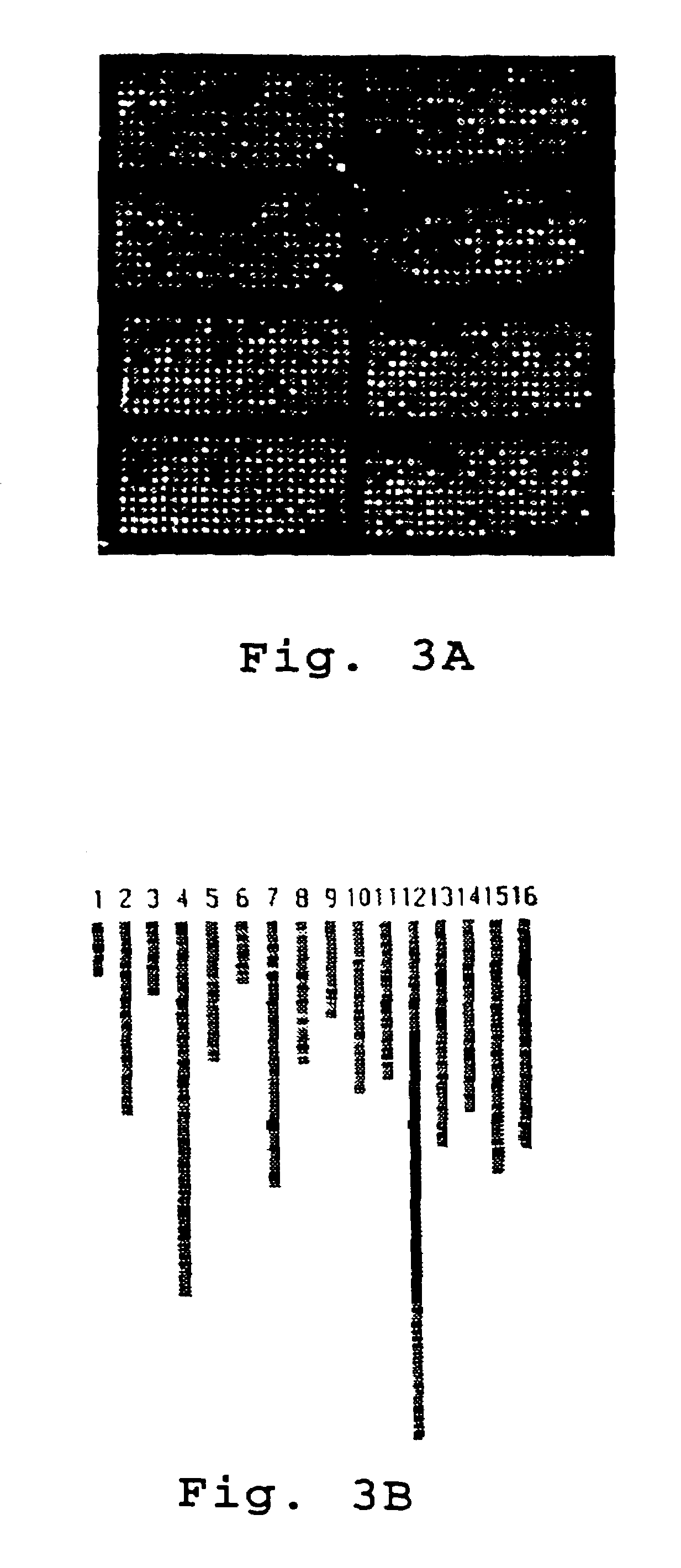A microarray for determining the relative abundances of polynucleotide sequences
- Summary
- Abstract
- Description
- Claims
- Application Information
AI Technical Summary
Benefits of technology
Problems solved by technology
Method used
Image
Examples
example 1
Genomic-Complexity Hybridization to Micro DNA Arrays Representing the Yeast Saccharomyces cerevisiae Genome with Two-Color Fluorescent Detection
[0158]The array elements were randomly amplified PCR (Bohlander, et al., 1992) products using physically mapped lambda clones of S. cerevisiae genomic DNA templates (Riles, et al., 1993). The PCR was performed directly on the lambda phage lysates resulting in an amplification of both the 35 kb lambda vector and the 5–15 kb yeast insert sequences in the form of a uniform distribution of PCR product between 250–1500 base pairs in length. The PCR product was purified using Sephadex G50 gel filtration (Pharmacia, Piscataway, N.J.) and concentrated by evaporation to dryness at room temperature overnight. Each of the 864 amplified lambda clones was rehydrated in 15 μl of 3×SSC in preparation for spotting onto the glass.
[0159]The microarrays were fabricated on microscope slides coated with a layer of poly-1-lysine, as above. Immediately prior to us...
example 2
Fluorescence Detection of Gene Expression Patterns using Micro Arrays of Arabidopsis cDNA Clones
[0163]A. Microarray Preparation
[0164]Target messenger nucleic acid DNA fragments were made by amplifying the gene inserts from 45 different Arabidopsis thaliana cDNA clones and 3 control genes using the polymerase chain reaction (PCR; Mullis, et al.). The DNA fragments comprising the PCR product from each of the 48 reactions were purified using “QIAQUICK” PCR purification kits (Qiagen, Chatsworth, Calif.), eluted in ddH2O, dried to completion in a vacuum centrifuge and resuspended in 15 μl of 3× sodium chloride / sodium citrate buffer (SSC). The capacity of the “QIAQUICK” purification kits is 10 μg of DNA; accordingly, each sample contained about 10 μg or less of DNA.
[0165]The samples were then deposited in individual wells of a 96 well storage plate with each sample split among two adjacent wells as a test of the reproducibility of the arraying and hybridization process. The samples were s...
example 3
Differential Gene Expression Due to Heat Shock in Human T cells (Jurkat Cell Line)
[0178]A. Constructing a Human Gene Expression Microarray
[0179]Human cDNA clones were picked at random from a human peripheral blood cDNA library, and propagated as bacterial cultures. The human cDNA library was made using mRNA isolated from human peripheral lymphocytes transformed with the Epstein-Barr Virus (EBV). Inserts of >600 bases were cloned into the lambda vector lYES-R to generate 107–108 recombinants. Bacterial transformants were obtained by infecting E. Coli strain JM107 / lKC. Colonies were picked, propagated in a 96-well format, and minilysate DNA was prepared by alkaline lysis using REAL preps (Qiagen).
[0180]Plasmid DNA was isolated and inserts from each clone were amplified by use of the polymerase chain reaction (PCR) and purified. Inserts were amplified by PCR in a 96-well format using primers (PAN132, 5′ CCTCTATACTTTAACGTCAAGG; PAN133, 5′ TTGTGTGGAATTGTGAGCGG) complementary to the lYES ...
PUM
| Property | Measurement | Unit |
|---|---|---|
| Angle | aaaaa | aaaaa |
| Angle | aaaaa | aaaaa |
| Angle | aaaaa | aaaaa |
Abstract
Description
Claims
Application Information
 Login to View More
Login to View More - Generate Ideas
- Intellectual Property
- Life Sciences
- Materials
- Tech Scout
- Unparalleled Data Quality
- Higher Quality Content
- 60% Fewer Hallucinations
Browse by: Latest US Patents, China's latest patents, Technical Efficacy Thesaurus, Application Domain, Technology Topic, Popular Technical Reports.
© 2025 PatSnap. All rights reserved.Legal|Privacy policy|Modern Slavery Act Transparency Statement|Sitemap|About US| Contact US: help@patsnap.com



